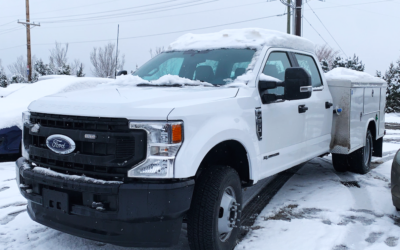Increase Fleet Safety: Hire the Right Drivers
The fleet business is a booming industry with a large array of advanced vehicles under its wing, which provide optimum security and comfort to company crews and their equipment. With that said, regardless of how technologically advanced a vehicle is, fleet safety begins with the driver of the vehicle.
After all, a vehicle is only as good as the person who is driving it. This is why fleet companies hire drivers only after a thorough background check and comprehensive training. The process begins with hiring the right person for the job and it continues throughout their employment.
It’s the responsibility of the fleet managers to ensure that the drivers that they hire are safe. They are also responsible for assessing their performance and ultimately, manage the risks involved.
So, let’s take a look at how fleet companies and managers hire their drivers.
The MVR Check
The first step of the hiring process is a thorough inspection of the driver’s records. Potential drivers and candidates sign off on the company’s authority to acquire a Motor Vehicle Report (MVR), which is considered to be a part of the overall background check.
What Is an MVR?
An MVR check is an essential part of the background screening process for a driver. It is used to let an employer know if their applicant or even current employee has traffic violations, been convicted of driving under the influence, or has any unpaid parking tickets. These records are kept by the Department of Motor Vehicles in all US states. The MVR is done only for the state in which the applicant holds a current license and does not include their driving history in other states.
Why Are MVRs Important?
Fleet managers need to know whether a potential employee that will drive their fleet vehicle is safe and responsible behind the wheel or not. A review of the applicant’s driving record will give the fleet manager an idea as it will reveal whether the candidate has previously been involved in risky behavior such as excessive speeding. It will also inform them whether that candidate has committed illegal actions such as driving under the influence of alcohol or drugs. Similarly, a fleet manager looking for a candidate who can drive during the evening needs to know whether that candidate is even allowed to drive during the evening or not. All of this information will allow fleet managers to assess fleet safety under a potential driver.
However, MVRs are not just essential for hiring a new driver, they also help fleet managers keep a check on the record of their employees. Fleet managers review the MVRs of all of their existing drivers regularly. At times, the evaluations are done after a quarter year and sometimes after six months. If there are any violations found in the driver’s record, they are dealt with according to fleet policy.
Challenges With MVRs
To begin with, the MVR process was not digitized at the start; fleet managers obtained the reports from each state manually. The primary challenge with this approach was that each state had its own point system, fee, and format. Eventually, paper reports were replaced by their more efficient digital counterparts. Fleet companies and managers began to collect these reports to create a “universal” format of their own, which enabled fleet managers to assess the driving risk more efficiently.
Even though accessing and reviewing the MVRs of drivers does give fleet managers an idea of how a driver is going to behave behind the wheel, it is still a limited idea. How so? Well, the report only mentions instances where the driver has been caught in a violation. If a driver has a clean record with zero speeding tickets, it does not mean that he or she has never crossed the speed limit, it just means that they have never been caught speeding.
Furthermore, fleet managers can’t truly assess how the MVR report is going to shape up for a driver in their future. This means that a fleet manager might very well see a clean record at the beginning of a year for a driver, then toward the end of that year, a speeding ticket, a DUI, or some other violation. Going by the report, that driver was a risk to themselves and others during that time and placed their employer, the fleet company, at serious liability and negligent entrustment risk.
So, is there some newer technology that has made the MVR process better? Well, technology has definitely improved the MVR review process and made it easier. With that said, the review of driver records during the hiring process and their entire tenure probably won’t be replaced with anything else.
So, how do fleet managers assess fleet safety? Well, this is where telematics comes into the picture!
The Need for Telematics
Telematics has truly transformed driver risk management. Telematics hasn’t traded places with MVRs as a risk management tool, but it has intensely enhanced the overall driver risk assessment. With telematics, driver behavior is reported to the fleet manager in real-time. The behavioral patterns include the following essential elements:
- Harsh acceleration
- Speeding
- Harsh and sudden braking
- Seat belt use or lack thereof
- Harsh cutting and cornering
Telematics essentially allows fleet managers to monitor a vehicle and see risk factors occurring in real-time. This allows them to take immediate and appropriate action, which prevents violations and increases fleet safety.
The Bottom Line
All in all, drivers have an important role to play in keeping the fleet vehicles safe and ensuring that the cargo and passengers remain safe and unharmed during their journey. The fleet managers assess the risk that each driver poses to the fleet via MVRs and telematics technology. These two methods work together seamlessly; telematics allows fleet managers to asses and manages driver risk in real-time, while MVRs help fleet companies report actionable behavior through their policies. The combination of the two provides a powerful and dependable risk management and enforcement tool for fleet companies.
Source:
https://www.automotive-fleet.com/352688/fleet-safety-starts-with-drivers






